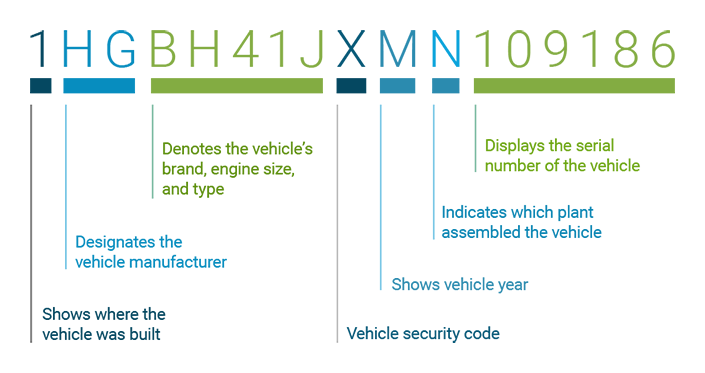Each Vehicle History Report checks for:
- Accidents
- Maintenance
- Title History
- Odometer Record
- Accident Records
- Liens / Loans
- Impounds
- Thefts
- Soles History

Active Recalls for your
Recalls reported to the National Highway Traffic Safety Administration
Decode the VIN
If you're like most people, you probably think a vehicle identification number (VIN) is just a series of random characters. Actually, each character in this highly structured code has its own meaning. In fact, deciphering these codes is a hobby for some car enthusiasts, including collectors who want to own one of the first or last cars to come off an assembly line.
When you're considering purchasing a pre-owned vehicle, it's always a good idea to obtain a vehicle history report (VHR) or VIN check. Knowing how to read the VIN could help you make an informed decision before you buy.
Decoding a Sample VIN
The infographic below provides a simplified look at a sample VIN. Keep in mind that vehicles manufactured before 1981 might have fewer characters than today's standard VIN of 17 characters.

Model Year & Country Codes
As shown above, the 10th character of the VIN indicates its model year.
- A: 1980 or 2010
- B: 1981 or 2011
- C: 1982 or 2012
- D: 1983 or 2013
- E: 1984 or 2014
- F: 1985 or 2015
- G: 1986 or 2016
- H: 1987 or 2017
- J: 1988 or 2018
- K: 1989 or 2019
- L: 1990 or 2020
- M: 1991
- N: 1992
- P: 1993
- R: 1994
- S: 1995
- T: 1996
- V: 1997
- W: 1998
- X: 1999
- Y: 2000
- 1: 2001
- 2: 2002
- 3: 2003
- 4: 2004
- 5: 2005
- 6: 2006
- 7: 2007
- 8: 2008
- 9: 2009
Country of Origin Character Codes
The 1st character in a car's vehicle identification number indicates the country in which it was manufactured.
Some of the country codes include:
- 1, 4, 5: United States
- 2: Canada
- 3A-37: Mexico
- J: Japan
- VF-VR: France
- 9: Brazil
- WA-W0: West Germany
- S: Great Britain